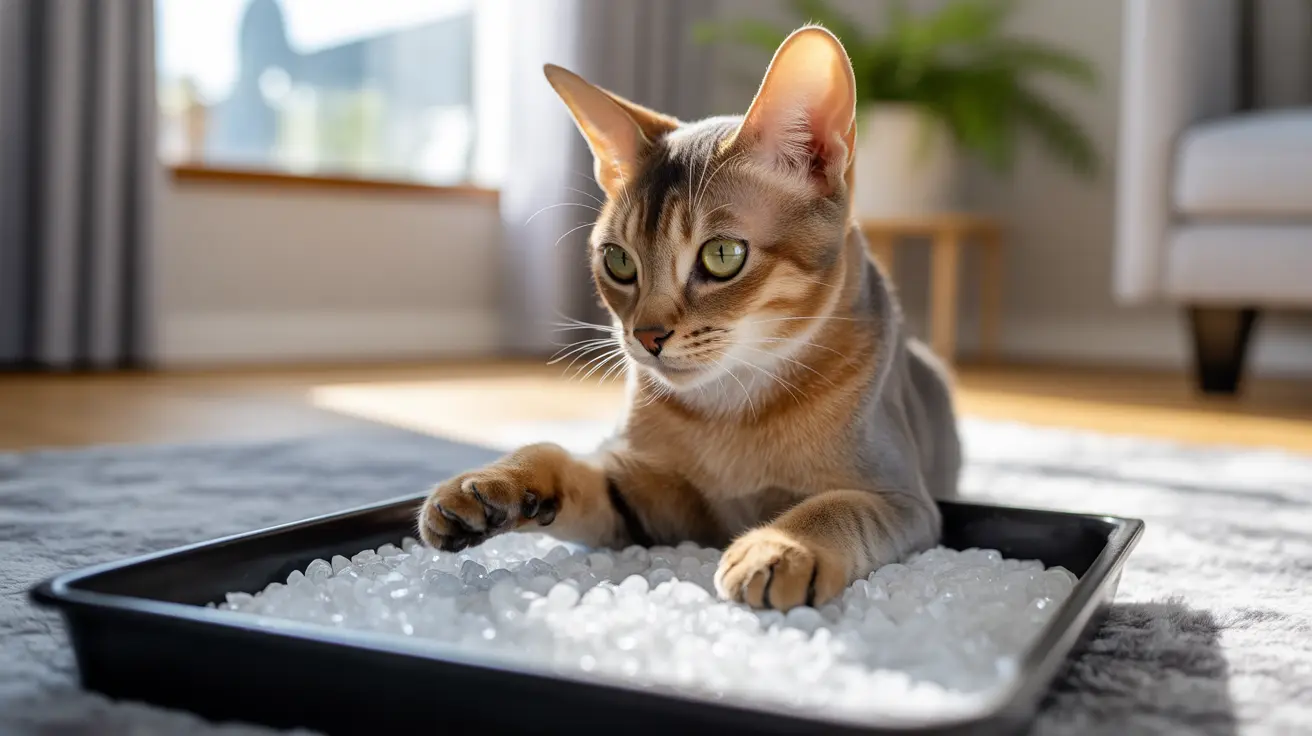Understanding Crystal Cat Litter Composition
Crystal cat litter consists primarily of amorphous silica gel, a synthetic form of silicon dioxide derived from sodium silicate sand and oxygen. Unlike crystalline silica found in some clay litters, this amorphous form is specifically engineered to be safe for both cats and humans. The silica gel is processed into small, porous beads or granules that can absorb up to 40 times their weight in liquid.
How Crystal Cat Litter Works
The secret behind crystal cat litter's effectiveness lies in its microscopic structure. Each silica gel crystal contains countless tiny pores that actively trap moisture and odor-causing molecules. When your cat uses the litter box, these pores quickly absorb urine while simultaneously dehydrating solid waste, effectively neutralizing odors at their source.
Benefits of Crystal Cat Litter
Superior Absorption and Odor Control
The unique molecular structure of silica gel makes crystal cat litter exceptionally efficient at moisture absorption and odor control. A single bag can last up to one month for one cat, significantly longer than traditional clay litters.
Low Dust and Tracking
Crystal cat litter produces minimal dust compared to clay alternatives, making it an excellent choice for cats and owners with respiratory sensitivities. While some tracking can occur, many brands offer larger crystal sizes that help minimize this issue.
Potential Drawbacks to Consider
Cost Considerations
Crystal cat litter typically costs more per package than traditional options. However, its extended lifespan often makes it cost-effective in the long run, as you'll need fewer changes throughout the month.
Environmental Impact
The production of silica gel requires mining operations that can affect local ecosystems. Additionally, crystal cat litter is non-biodegradable, contributing to landfill waste. Environmentally conscious cat owners should weigh these factors in their decision-making process.
Best Practices for Using Crystal Cat Litter
To maximize the benefits of crystal cat litter, follow these essential tips:
- Scoop solid waste daily
- Stir the crystals regularly to distribute moisture evenly
- Monitor for signs of saturation
- Replace completely after approximately 30 days for one cat
- Consider using multiple boxes for multi-cat households
Frequently Asked Questions
What is crystal cat litter made of and how is it different from clay litter?
Crystal cat litter is made of amorphous silica gel, derived from sodium silicate sand and oxygen. Unlike clay litter, it's non-clumping and uses microscopic pores to absorb moisture and trap odors, rather than forming clumps when wet.
How does crystal cat litter control odor and absorb moisture so effectively?
The silica gel crystals contain millions of microscopic pores that trap moisture and odor-causing molecules. This structure allows them to absorb up to 40 times their weight in liquid while simultaneously dehydrating solid waste for superior odor control.
Are crystal cat litters safe and non-toxic for cats and humans?
Yes, crystal cat litter is safe for both cats and humans. The amorphous silica used in crystal litter is non-toxic and doesn't pose the respiratory risks associated with crystalline silica found in some clay litters.
What are the environmental impacts of using crystal silica cat litter?
Crystal cat litter has two main environmental concerns: the mining process required to obtain silica, which can impact local ecosystems, and its non-biodegradable nature, which contributes to landfill waste.
How should I use and maintain crystal cat litter to prevent urine pooling and tracking?
To maintain crystal cat litter effectively, scoop solid waste daily, stir the crystals regularly to distribute moisture evenly, and monitor for signs of saturation. Use a litter mat and high-sided box to minimize tracking, and replace the litter completely every 30 days for single-cat households.






